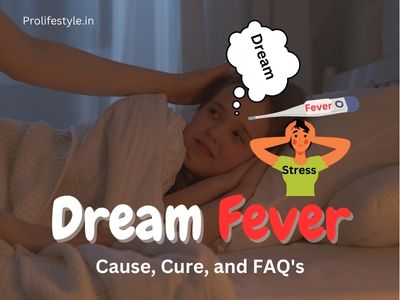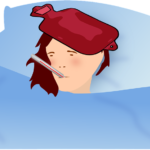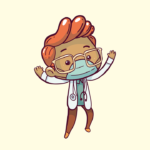A fever dream is a term used to depict a striking and extreme dream or visualization that happens during a time of high fever or disease. At the point when the internal heat level’s is altogether raised, it can influence the mind’s ordinary working and lead to adjusted insights, distinctive pictures, and mutilated contemplations. Fever dreams are many times portrayed by strange and peculiar encounters, where reality and dream mix together.

During a fever, the cerebrum’s synapses and brain circuits might be impacted, leading to strange and fanciful dreams. These fantasies can be clear, close to home, and once in a while disrupting. The substance of fever dreams can shift broadly from one individual to another, yet normal components incorporate contorted impression of time, weird or fantastical situations, and an uplifted profound power.
It’s vital to take note of that while fever dreams are a peculiarity related with disease, they are brief and commonly die down once the hidden reason for the fever is dealt with. As the internal heat level’s profits to ordinary, the surprising dream encounters will quite often reduce.
Cause of dream fever
Dream fever are referring to vivid dreams or intense dreaming, it is important to note that various factors can contribute to the content and intensity of dreams. Here are some common factors :
- Sleep Cycle : Dreams often occur during the Rapid Eye Movement (REM) stage of sleep, which is a phase associated with increased brain activity and vivid dreaming.
- Stress and Anxiety : Emotional stress or anxiety can influence the content of dreams. People experiencing high levels of stress may have more intense or disturbing dreams.
- Medications : Certain medications, including some antidepressants, can influence dream patterns. Changes in medication or dosage may impact the nature of dreams.
- Sleep Disorders : Conditions like sleep apnea or insomnia can affect sleep patterns, potentially influencing dream experiences.
- Fever or Illness : As mentioned earlier, a fever or illness can lead to vivid and intense dreams, commonly referred to as fever dreams.
- Substances : The use of substances such as alcohol, nicotine, or recreational drugs can impact dream patterns.
- Sleep Deprivation : Lack of sleep or irregular sleep patterns can influence the intensity and content of dreams.
- Life Events and Trauma : Significant life events, trauma, or emotional experiences may manifest in dreams as the mind processes and integrates these events during sleep.
It’s essential to think about individual contrasts, as not every person will encounter similar variables similarly. On the off chance that somebody is reliably encountering troublesome or upsetting dreams, it could be useful to talk with a medical care proficient or a sleep expert for direction.
Cure of dream fever
Dream fever are alluding to extraordinary or upsetting dreams, it’s essential to take note of that fantasies are a characteristic and frequently wild part of rest. As a rule, they don’t need a fix however may profit from way of life changes or tending to hidden factors.
Here are a few ideas :
- Improve Sleep Hygiene :
🔹Ensure a steady rest plan, holding back nothing long stretches of value rest each evening.
🔹Create an agreeable and dim resting climate.
🔹Stay away from energizers like caffeine near sleep time. - Manage Stress and Anxiety :
🔹Practice relaxation strategies like profound breathing, contemplation, or care to decrease pressure.
🔹Consider counseling or therapy if stress and anxiety are persistent. - Evaluate Medications :
🔹If you are taking medications that may influence dreaming, discuss your concerns with your healthcare provider. They might change the dose or investigate elective prescriptions. - Address Underlying Health Issues :
🔹If your dreams are associated with a fever or illness, focus on treating the underlying health issue. Once the illness is resolved, the intensity of dreams may diminish. - Limit Substance Use :
🔹Avoid the consumption of alcohol, nicotine, or recreational drugs close to bedtime, as these substances can impact dream patterns. - Maintain a Healthy Lifestyle :
🔹Regular exercise and a balanced diet contribute to overall well-being, which can positively influence sleep and dream quality. - Professional Help :
🔹If disturbing dreams persist or significantly impact your daily life, consider consulting with a sleep specialist or mental health professional for personalized advice and guidance.
It’s crucial to recognize that vivid dreams are a common and normal aspect of sleep for many people. However, if your dreams are causing distress or are part of a broader pattern of sleep disruption, seeking professional advice can be beneficial. They can help identify potential underlying issues and provide guidance on improving sleep quality.
FAQs of Dream fever
Opposite of fever dream
Opposite to a fever dream, regarding the strange and illusory encounters, may be a Clear dream (Lucid).
While a fever dream is depicted by a bended and much of the time unconventional perspective on this present reality, a Clear dream is one in which the visionary realizes that they are dreaming. Clear dreaming (Lucid) permits people to have some level of command over the fantasy climate, and they may effectively partake in or control the fantasy account.
In a fever dream, the visionary might feel an absence of control and experience an uplifted profound force because of the modified condition of cognizance. Conversely, clear dreaming gives a feeling of mindfulness and organization inside the fantasy, permitting the visionary to explore or impact the fantasy experience intentionally.
Fever dream definition
A fever dream alludes to a striking and frequently unusual or illusory dream experienced by a person during a time of high fever or disease. When the body’s temperature is elevated, it can lead to altered brain function, resulting in intense and surreal dream experiences. Fever dreams are portrayed by contorted view of the real world, clear symbolism, and a feeling of illusion. The content of these dreams can be strange, emotionally charged, and may involve fantastical or exaggerated elements. Once the underlying illness or fever is treated, these vivid dream experiences typically subside.


